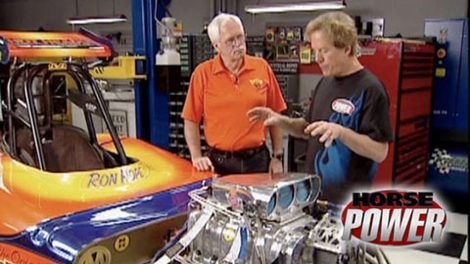HorsePower Builds
Want more content like this?
Join the PowerNation Email NewsletterParts Used In This Episode
Ankenbrandts Inc.
Split flange header.
Cherry Bomb
"SHORTY" glass pack mufflers.
Leading Edge Lubricants
Fuel system treatment, synthetic oil booster, super concentrated octane booster, coolant radiator treatment.
Mallory Performance
Hyfire 6 EZ ignition box, E-series ignition coil.
Powermaster
12 V AGM Powermaster battery.
Summit Racing
570 CFM street Avenger, Weiand intake, Lunati cam and lifters, Fel-Pro gaskets, ARP bolts, Holley air cleaner.





























